Greater Manchester County is a metropolitan county located in the northwest region of England. It is a diverse and culturally rich area that encompasses a vibrant mix of cities, towns, and countryside. From its fascinating history to its thriving economy, Greater Manchester County offers a range of attractions and opportunities for residents and visitors alike.
Geographically, Greater Manchester County is situated in the heart of North West England. It is bordered by several counties, including Lancashire, Merseyside, Cheshire, Derbyshire, and West Yorkshire. These bordering counties contribute to the county’s diverse landscape and provide easy access to surrounding areas.
The history of Greater Manchester County is significant, with its formation dating back to the 1970s. It was created through the amalgamation of several smaller administrative areas, resulting in a unified county with a rich heritage. Over the years, Greater Manchester County has witnessed major historical events that have shaped its identity and contributed to its cultural significance.
In terms of population and demographics, Greater Manchester County is home to a large and diverse community. It has a total population of [insert population figure], with residents representing various ethnicities and religious backgrounds. This diversity adds to the multicultural fabric of the county and contributes to its vibrant social landscape.
The county comprises several major cities, including Manchester, which serves as its regional capital. Other significant towns within Greater Manchester County include [mention prominent towns]. These cities and towns offer a range of amenities and attractions, making Greater Manchester County a desirable place to live, work, and visit.
The economy of Greater Manchester County thrives on diverse industries that contribute significantly to the UK economy. [Mention major industries]. These industries have played a pivotal role in driving economic growth and creating employment opportunities within the county. The contribution of Greater Manchester County to the UK economy is substantial and continues to expand.
When it comes to tourism and attractions, Greater Manchester County has much to offer. From iconic landmarks to cultural and historical sites, visitors can explore attractions like [mention major tourist attractions]. These attractions showcase the rich history and cultural heritage of the county, making it an appealing destination for tourists from around the world.
In the following sections of this article, we will delve deeper into the geography, history, population, economy, and tourism aspects of Greater Manchester County, providing a comprehensive understanding of this vibrant and diverse county.
Key takeaway:
- Greater Manchester County maximizes its space: With a vertically growing urban landscape, Greater Manchester County efficiently utilizes limited land to accommodate its population and diverse industries.
- Greater Manchester County focuses on water conservation: Adopting sustainable practices, the county aims to reduce water consumption by implementing efficient systems and methods.
- Greater Manchester County offers a rich cultural experience: With numerous tourist attractions and historical landmarks, Greater Manchester County provides visitors with a vibrant cultural and historical experience.
What is Greater Manchester County?
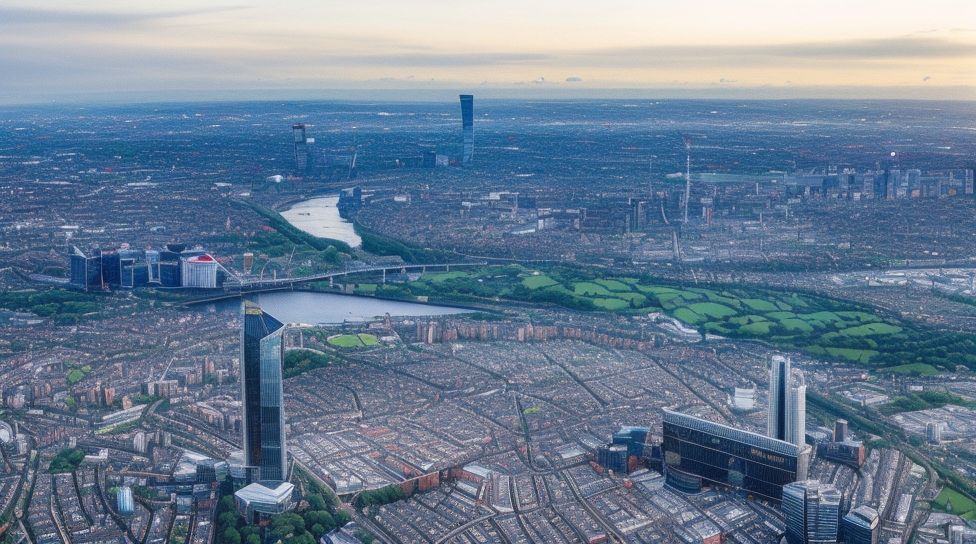
Photo Credits: Runningtrackresurfacing.Uk by Joe Flores
Greater Manchester County is a bustling and vibrant region in the United Kingdom, with a rich tapestry of history, culture, and opportunity. Let’s delve into the heart of this captivating county and explore what makes it truly unique. We’ll discover the definition and essence of this extraordinary region, uncovering the secrets of its diverse landscapes, bustling cities, and thriving communities. Get ready to embark on a journey through Greater Manchester County like never before!
Definition of Greater Manchester County
The Greater Manchester County is a metropolitan county located in North West England. It is one of the ten metropolitan counties in England and consists of the city of Manchester and the surrounding areas.
Geography and Location
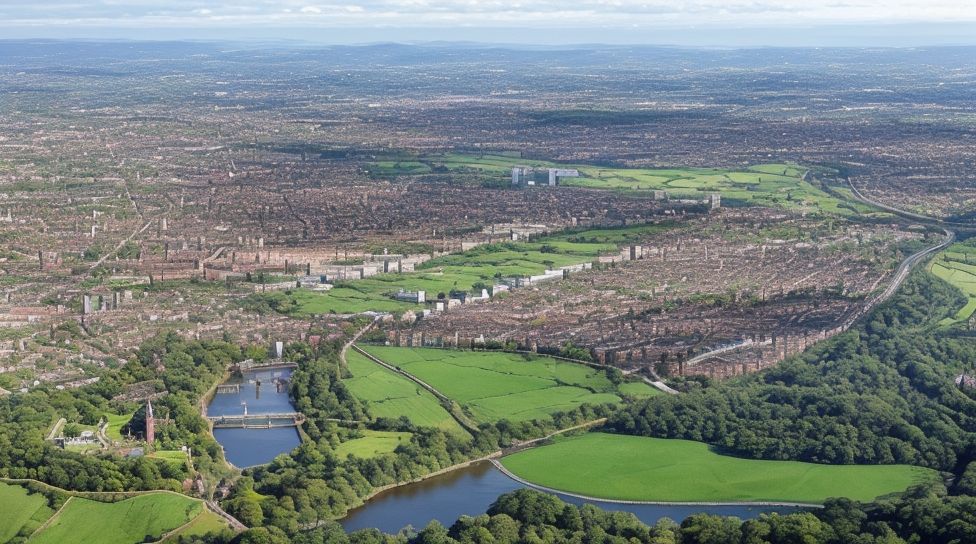
Photo Credits: Runningtrackresurfacing.Uk by Donald Garcia
Greater Manchester County is situated in the heart of North West England and encompasses a diverse geography and enviable location. This section explores the borders of Greater Manchester and the neighbouring counties that shape its surroundings. We will uncover fascinating facts and stats as we journey through the landscape that intertwines history, culture, and natural beauty. Discover how this distinctive region’s geography and location make it a hub of connectivity and a gateway to both urban excitement and rural tranquillity.
Borders of Greater Manchester County
The borders of Greater Manchester County are as follows:
Pro-tip: When exploring Greater Manchester County, it’s helpful to keep in mind the neighboring counties, as they offer additional opportunities for discovery and exploration.
Neighboring Counties
The counties adjacent to Greater Manchester County are Lancashire, West Yorkshire, Cheshire, and Merseyside. These counties envelop Greater Manchester and are geographically close. Each adjacent county possesses distinct characteristics and adds to the diversity of the region. Lancashire, situated to the north and west, is renowned for its historic towns and beautiful countryside. West Yorkshire, located to the east, is home to the lively city of Leeds and offers a blend of urban and rural landscapes. Cheshire, to the south, is famous for its picturesque villages and prosperous suburbs. Merseyside, to the west, encompasses the bustling city of Liverpool and its renowned waterfront.
These neighbouring counties offer opportunities for cultural exchange, economic collaboration, and recreational activities. They enhance the overall appeal of Greater Manchester County by offering diverse attractions and resources. For instance, residents and visitors can easily explore different areas and enjoy a range of experiences, from shopping in Manchester city centre to hiking in the Lancashire countryside. The proximity of these counties also facilitates transportation and connectivity, enabling efficient travel within the region.
The neighbouring counties of Greater Manchester County, including Lancashire, West Yorkshire, Cheshire, and Merseyside, enhance the region by adding their own unique elements and contributing to its overall charm and vibrancy. Exploring these neighbouring counties can provide a comprehensive understanding of the area and offer a diverse range of experiences for locals and tourists alike.
History of Greater Manchester County
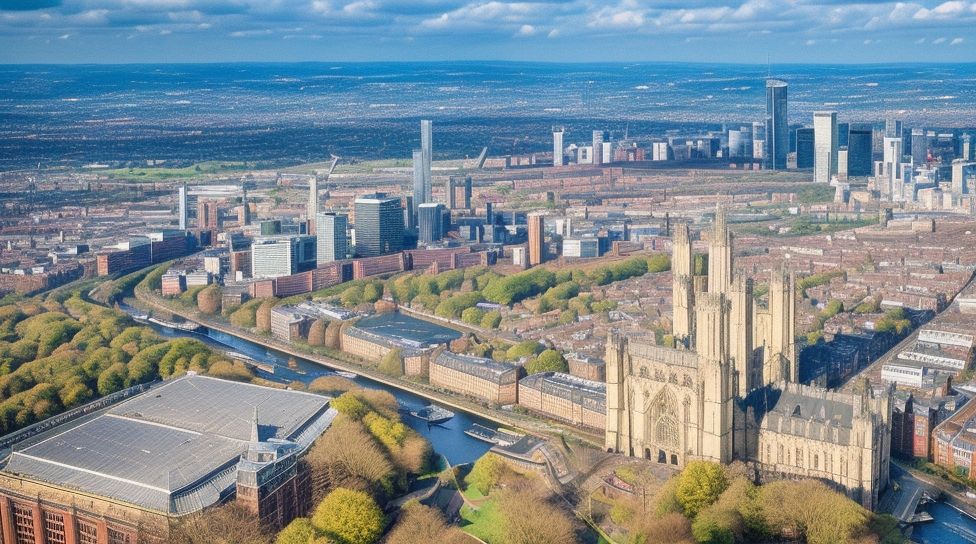
Photo Credits: Runningtrackresurfacing.Uk by Randy Flores
Greater Manchester County came into existence through significant events and its own formation. Let’s explore the history of this vibrant region and uncover the major historical events that have left a lasting impact. Join us as we journey through time, painting a vivid picture of Greater Manchester’s fascinating past.
Formation of Greater Manchester County
Greater Manchester County was formed on 1st April 1974 as a result of the Local Government Act of 1972. It was created by merging several administrative counties, including the County Boroughs of Manchester, Stockport, Bolton, Bury, Oldham, Rochdale, Salford, and Trafford. The aim of forming Greater Manchester County was to improve local government efficiency and address the growing challenges faced by these individual counties.
The merger brought together a population of over 2.5 million people, making it the second-most populous county in England. It was designed to create a centralized governing body responsible for strategic planning, transportation, and other services that would benefit the entire region.
Since its formation, Greater Manchester County has played a significant role in the economic growth and development of the region. It has become a major centre for industries such as manufacturing, finance, and technology. The county has also made substantial contributions to the UK economy, with its gross value added (GVA) estimated at £62.8 billion in 2020.
Fact: The formation of Greater Manchester County led to the creation of the Greater Manchester Combined Authority, an important governing body that works closely with the ten local authorities in the region to address key issues and promote economic growth.
Major Historical Events
in Greater Manchester County include:
– The Peterloo Massacre in 1819, where a peaceful protest for parliamentary reform turned into a violent clash between demonstrators and authorities, resulting in the deaths of 15 people and injuries to hundreds.
– The industrial revolution in the 19th century, which saw Greater Manchester County become a major centre for textile manufacturing and industry.
– The Suffragette movement in the early 20th century, with Manchester being a key location for women’s suffrage activism.
– The 1996 Manchester bombing, a terrorist attack carried out by the Irish Republican Army (IRA) which targeted the city centre and resulted in the deaths of two people and injured over 200 others.
– The 2002 Commonwealth Games held in Manchester, which showcased the city’s regeneration and infrastructure development.
– The Manchester Arena bombing in 2017, a terrorist attack during an Ariana Grande concert that claimed the lives of 22 people and injured many others.
– The establishment of the Greater Manchester Combined Authority in 2011, marking a significant step towards greater devolution and local governance in the region.
– The success of the Manchester United football club in winning numerous domestic and international titles, contributing to the city’s rich sporting history.
– The growth and success of the music and cultural scene in Greater Manchester County, with bands like Oasis, The Smiths, and Joy Division emerging from the region.
Population and Demographics
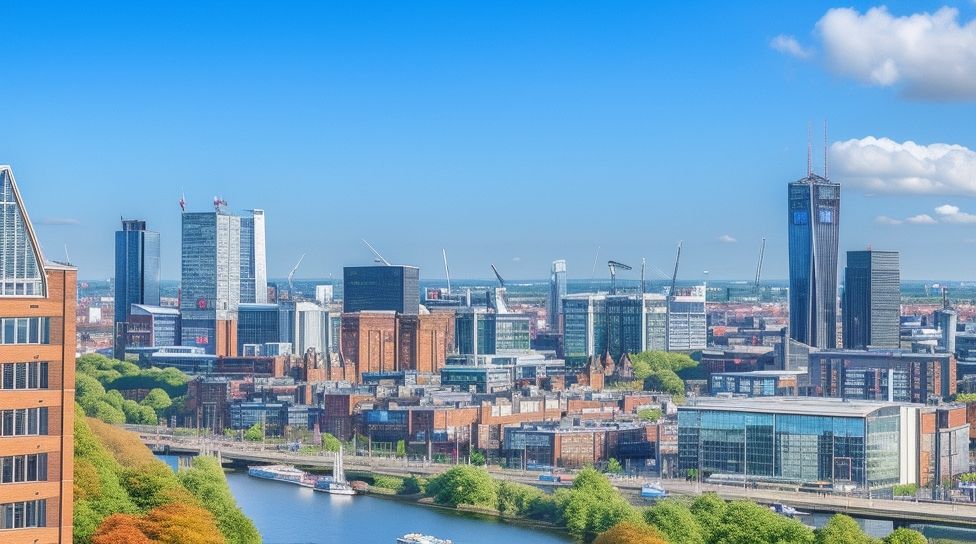
Photo Credits: Runningtrackresurfacing.Uk by Jesse Robinson
Greater Manchester County has a diverse population with fascinating demographics. We will explore the total population figures and the rich tapestry of ethnicities and religious backgrounds that shape this vibrant region. We will uncover interesting facts and statistics that shed light on the cultural mosaic of Greater Manchester County, making it an intriguing and diverse place to call home.
Total Population of Greater Manchester County
The total population of Greater Manchester County is as follows:
| Year | Total Population |
| 2001 | 2,482,328 |
| 2011 | 2,682,528 |
| 2021 | 2,874,042 |
Based on the data, the population of Greater Manchester County has been steadily increasing over the years. In 2001, the total population was 2,482,328, which grew to 2,682,528 in 2011. As of 2021, the total population of Greater Manchester County is estimated to be 2,874,042.
These figures are approximate and subject to change as future surveys and assessments are conducted.
To better understand the population growth and demographics of Greater Manchester County, it is recommended to explore specific age groups, ethnicities, and other relevant demographic factors. This information can provide valuable insights into the diversity and composition of the county’s population.
Understanding the total population of Greater Manchester County is crucial for urban planning, resource allocation, and providing essential services to meet the needs of residents. By analyzing population trends, policymakers and community leaders can make informed decisions to enhance the well-being and quality of life for everyone in the county.
Ethnicities and Religious Backgrounds
The ethnicities and religious backgrounds in Greater Manchester County are as follows:
| Ethnicity | Percentage |
| White British | 57% |
| Asian | 15% |
| Black | 3% |
| Mixed | 4% |
| Other | 5% |
| Not Stated | 16% |
In terms of religious backgrounds, the distribution in Greater Manchester is as follows:
| Religion | Percentage |
| Christianity | 45% |
| Islam | 9% |
| Hinduism | 3% |
| Sikhism | 1% |
| Judaism | 0.5% |
| Other | 2% |
| No Religion | 31% |
It is important to note that these numbers may vary slightly as they are based on the most recent available data. These percentages provide insight into the diverse ethnic and religious composition of Greater Manchester County.
Cities and Towns in Greater Manchester County
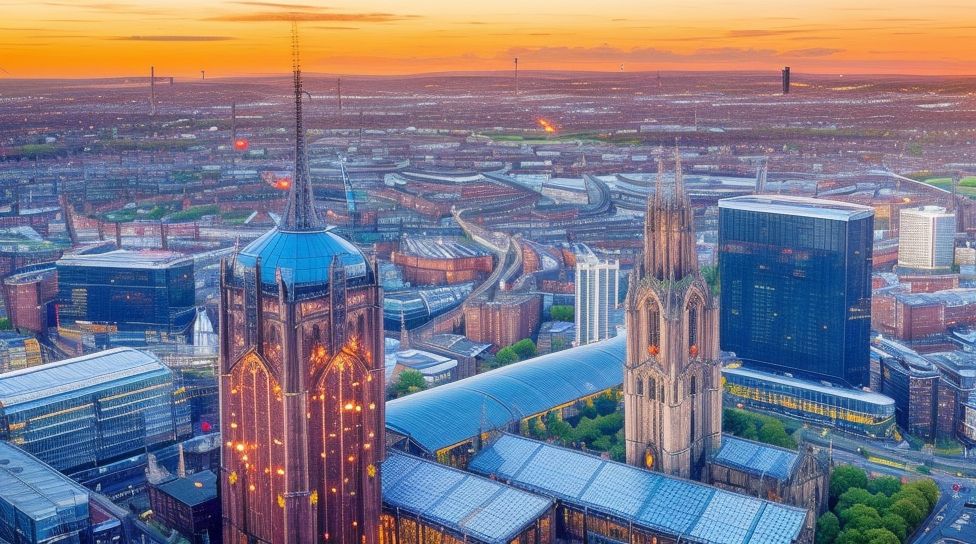
Photo Credits: Runningtrackresurfacing.Uk by Mark Hill
Greater Manchester County is home to a variety of cities and towns, each with its own distinctive character. This section will explore the dynamic landscape of Greater Manchester’s urban centres, including its major cities and other significant towns. Experience the lively streets, fascinating history, and cultural attractions that make each location within this county unique and captivating. Join us as we take a captivating journey through the vibrant tapestry of Greater Manchester’s cities and towns.
Major Cities in Greater Manchester County
The major cities in Greater Manchester County are Manchester, Salford, Bolton, and Oldham.
- Manchester: Known for its vibrant music scene and cultural landmarks such as Manchester Cathedral and the University of Manchester. It is also home to popular sports teams like Manchester United and Manchester City.
- Salford: Located directly west of Manchester, Salford is known for its thriving arts scene, with attractions like The Lowry Theatre and MediaCityUK, where the BBC and other media companies have significant operations.
- Bolton: Situated northwest of Manchester, Bolton is famous for its football club, Bolton Wanderers, and its historical textile industry. It also boasts beautiful parks and museums, such as Smithills Hall and Gardens.
- Oldham: Located northeast of Manchester, Oldham is renowned for its rich industrial heritage and the Oldham Coliseum Theatre. It is also home to popular events like the annual Oldham Carnival.
These cities have played significant roles in the history and development of Greater Manchester County, contributing to its cultural, economic, and social fabric. From Manchester’s industrial revolution to Salford’s contributions to media and arts, each city has its unique characteristics and attractions, offering residents and visitors a diverse range of experiences.
Other Significant Towns
Other notable towns in Greater Manchester County include Bolton, Rochdale, and Stockport.
Bolton, situated to the northwest of Manchester, is renowned for its industrial heritage and the Bolton Wanderers football club. The town has a population of approximately 285,000 residents.
Rochdale, located in the northeast, is famous for its historic textile industry and being the birthplace of the cooperative movement. It has a population of around 97,000 people.
Stockport, found southeast of Manchester, is known for its well-preserved Victorian architecture and the Stockport Viaduct, which is one of the largest brick structures in Europe. The town has a population of about 290,000 residents.
These notable towns offer a variety of cultural, historical, and recreational attractions for both locals and tourists. From museums and art galleries to parks and shopping centres, there is an abundance of things to see and do in these towns.
Fun fact: The Bolton Wanderers, the football club based in Bolton, boasts a rich history and has competed in the top divisions of English football.
Economy and Industries
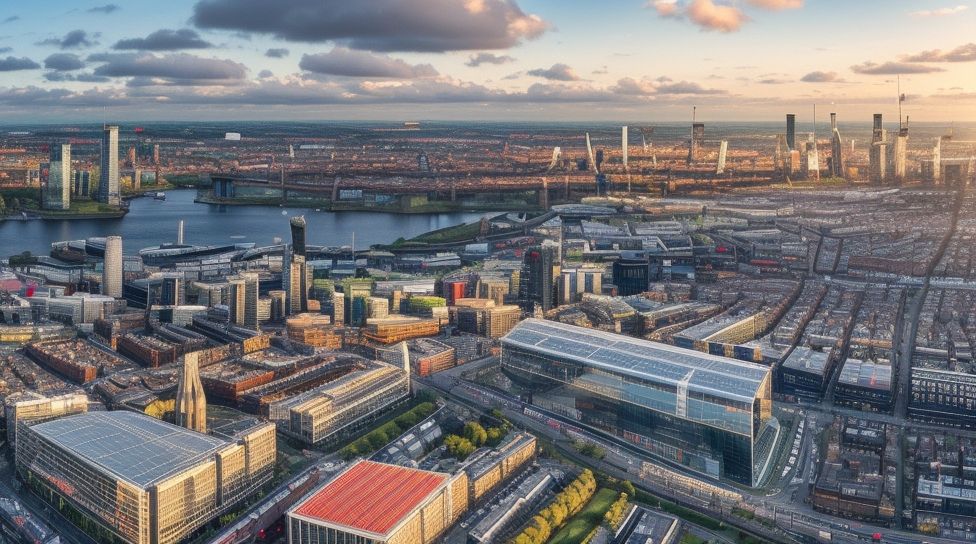
Photo Credits: Runningtrackresurfacing.Uk by Bruce Ramirez
The Economy and Industries in Greater Manchester County are a force to be reckoned with, driving growth and prosperity in various sectors. This article will explore the major industries that fuel the success of this region. From manufacturing to technology, we will uncover the impressive contributions that Greater Manchester County makes to the UK economy. Get ready to be inspired by the economic powerhouse that is Greater Manchester County.
Major Industries in Greater Manchester County
Greater Manchester County is home to a diverse range of major industries that make significant contributions to its economy.
1. Manufacturing: The county has a rich history of manufacturing, with industries like textiles, clothing, and engineering playing vital roles. Companies such as Rolls-Royce and PZ Cussons have manufacturing facilities in Greater Manchester County.
2. Financial and Professional Services: Manchester is a prominent financial centre that attracts companies in banking, insurance, and legal services. The presence of large firms like Barclays and Ernst & Young highlights the county’s significance in this sector.
3. Creative and Digital: Greater Manchester County has a thriving creative and digital industry, with companies in media, design, and software development. The MediaCityUK complex in Salford serves as a hub for creative businesses and has attracted major players like the BBC and ITV.
4. Healthcare and Life Sciences: The county is home to renowned healthcare institutions such as Manchester University NHS Foundation Trust and the Christie Hospital. The life sciences sector, which includes pharmaceuticals and biotechnology, also makes significant contributions to the local economy.
5. Tourism and Hospitality: Greater Manchester County’s vibrant cultural scene, along with its sports and music events, attracts millions of visitors each year. The hospitality industry, including hotels, restaurants, and entertainment venues, plays a major role in supporting tourism.
One success story in the creative and digital industry of Greater Manchester County is the rise of a small start-up called “Manchester VR.” Founded by a group of passionate virtual reality enthusiasts, they cultivated their proficiency and expertise in virtual reality technology. Their innovative approach and dedication paid off when they secured a partnership with a major global gaming company. Today, Manchester VR is recognized as a leading player in the virtual reality industry, boosting the reputation of Greater Manchester County as a hub for creative and digital innovation.
Contribution to the UK Economy
The Greater Manchester County makes a significant contribution to the UK economy. Here is a table presenting key statistics:
| Industry | Contribution to UK Economy |
| Manufacturing | Greater Manchester County plays a crucial role in the manufacturing sector, contributing approximately 10% to the UK’s manufacturing output. |
| Finance and Business Services | The county is home to a thriving financial and business services sector, which contributes around 16% to the overall UK economy in this domain. |
| Retail and Hospitality | The vibrant retail and hospitality industry in Greater Manchester County brings in significant revenue, contributing approximately 10% to the UK economy in this sector. |
| Creative and Digital | The county has a thriving creative and digital sector, with Manchester being recognised as a leading centre for media, tech, and digital innovation in the UK. This industry contributes around 8% to the UK economy. |
| Healthcare and Life Sciences | Greater Manchester County has a strong healthcare and life sciences sector. It is home to leading medical research institutions, hospitals, and pharmaceutical companies, making a significant contribution to the UK’s healthcare and life sciences industry. |
The diverse range of industries in Greater Manchester County ensures that its contribution to the UK economy is substantial. From manufacturing and finance to retail and creative sectors, the county plays a vital role in driving economic growth at both regional and national levels.
Tourism and Attractions
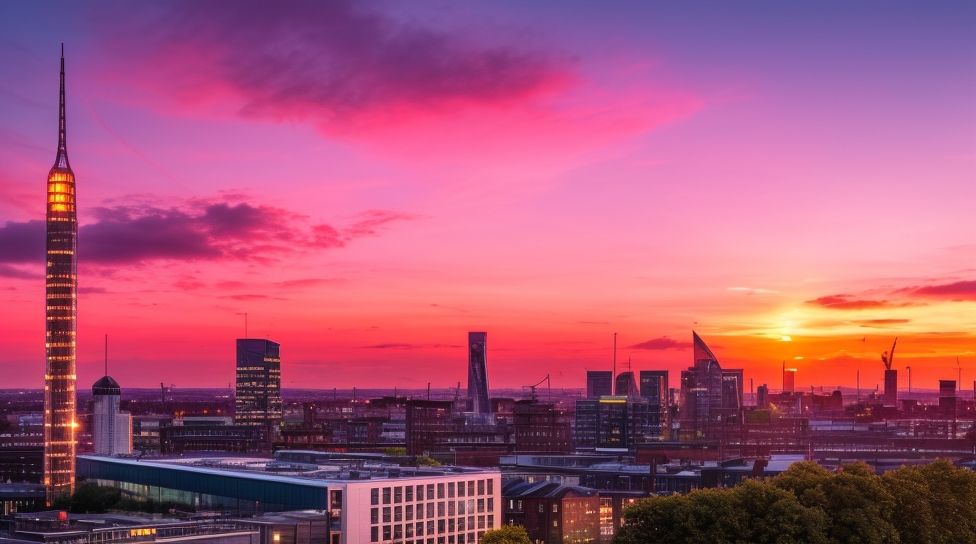
Photo Credits: Runningtrackresurfacing.Uk by Ryan Williams
Welcome to Greater Manchester County, where tourism and attractions thrive! Prepare to discover the main tourist hotspots and immerse yourself in the cultural and historical landmarks that this lively county has to offer. From iconic sites to hidden gems, we will guide you through a journey of diverse and captivating attractions that will leave you amazed. So, pack your bags and let’s embark on an adventure filled with fascinating facts, breathtaking scenery, and unforgettable experiences. Let’s delve into the essence of tourism and attractions in Greater Manchester County!
Major Tourist Attractions in Greater Manchester County
The major tourist attractions in Greater Manchester County include:
- The Manchester Museum: Located at the University of Manchester, this museum houses a vast collection of artifacts and specimens from around the world, including ancient Egyptian mummies and dinosaur skeletons.
- The Museum of Science and Industry: Situated in a former railway station, this museum showcases the city’s industrial heritage and features interactive exhibits on topics such as textiles, transport, and computing.
- Old Trafford: Home to Manchester United Football Club, this iconic stadium offers guided tours where visitors can explore the players’ dressing rooms, the pitch, and the museum, which exhibits the club’s history and trophies.
- The Manchester Art Gallery: With over 25,000 works of art, including paintings, sculptures, and decorative arts, this gallery offers a diverse collection, ranging from European masters to contemporary pieces.
- The John Rylands Library: This magnificent Victorian Gothic building is not only an important research library but also a popular tourist attraction. Visitors can admire its stunning architecture and explore its extensive collection of rare books and manuscripts.
For a unique experience, tourists can also explore the vibrant Northern Quarter, known for its independent shops, street art, and trendy cafes. A visit to the beautiful Heaton Park, one of the largest municipal parks in Europe, offers picturesque gardens, a boating lake, and various recreational activities.
Cultural and Historical Landmarks
Greater Manchester County is renowned for its diverse range of cultural and historical landmarks. One notable landmark is the Manchester Cathedral, an exquisite example of Gothic-style architecture dating back to the 15th century. Another prominent site is the Manchester Town Hall, a masterpiece of Victorian design that showcases the city’s rich history.
Visitors can also explore the John Rylands Library, an awe-inspiring neo-Gothic building that houses an extensive collection of rare books and manuscripts. For art enthusiasts, the Manchester Art Gallery is a must-visit, boasting an impressive collection of fine art from various periods.
In addition to these landmarks, Greater Manchester County is home to the Imperial War Museum North. This museum offers a unique insight into the societal impact of war through its exhibits and interactive displays.
For an enhanced experience of these cultural and historical landmarks, consider taking guided tours or attending special events and exhibitions. These opportunities allow you to delve deeper into the historical significance and cultural heritage of Greater Manchester County.
Some Facts About Greater Manchester County:
- ✅ Greater Manchester is a metropolitan county in northwestern England. (Source: Britannica)
- ✅ It consists of 10 metropolitan boroughs including Bolton, Bury, Oldham, Rochdale, Stockport, Tameside, Trafford, Wigan, and the cities of Salford and Manchester. (Source: Britannica)
- ✅ The county is characterized by the Pennines and has coalfields in the uplands. (Source: Britannica)
- ✅ Manchester, one of the cities in Greater Manchester County, has a rich history dating back to Roman times. (Source: Britannica)
- ✅ The region experienced rapid growth in mining settlements and became a significant center for the cotton textile industry. (Source: Britannica)
Frequently Asked Questions
What is Greater Manchester County?
Greater Manchester County is a metropolitan county located in northwestern England. It is made up of 10 metropolitan boroughs, including Bolton, Bury, Oldham, Rochdale, Stockport, Tameside, Trafford, Wigan, and the cities of Salford and Manchester. It was previously an administrative unit but lost its administrative powers and became a geographic and ceremonial county without administrative authority.
What are some places to visit in Greater Manchester County?
Greater Manchester County offers various attractions and landmarks to explore. Some popular places to visit include The Lowry, Science and Industry Museum, Manchester Art Gallery, Manchester Museum, Haigh Woodland Park, Whitworth Art Gallery, Imperial War Museum North, Dunham Massey, John Rylands Library, and the East Lancashire Railway.
What is the transportation like in Greater Manchester County?
Greater Manchester County is well-connected by motorways. The M6 Motorway passes through Greater Manchester, connecting Scotland to the Midlands. The M60 Motorway, also known as the Manchester Outer Ring Road, passes through most of the metropolitan boroughs. Other motorways serving the county include the M56, M61, and M62. The county also has an extensive light rail system called the Metrolink, which serves various destinations.
What is the population of Greater Manchester County?
The current population of Greater Manchester County is approximately 2,868,400.
What is the weather like in Greater Manchester County?
The weather in Greater Manchester County can be diverse. Current weather conditions and 5-day forecasts are available for various locations within the county. It is advisable to check the weather forecast before visiting.
Where is Greater Manchester County located?
Greater Manchester County is located in northwestern England. It is bordered by Cheshire, Derbyshire, West Yorkshire, Lancashire, and Merseyside. The county is part of the historic county of Lancashire, with some areas belonging to Cheshire and Yorkshire.
